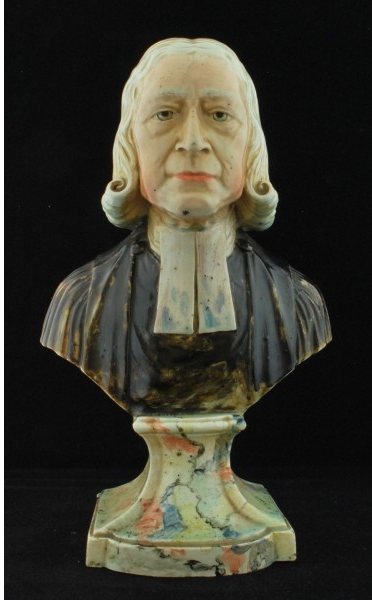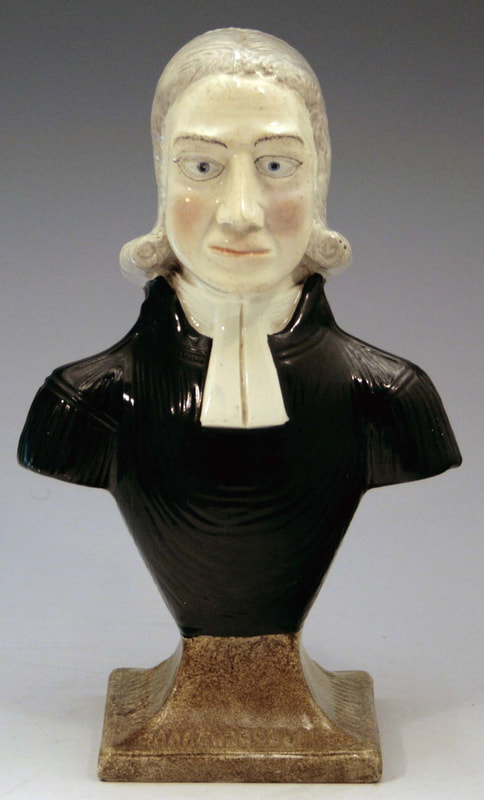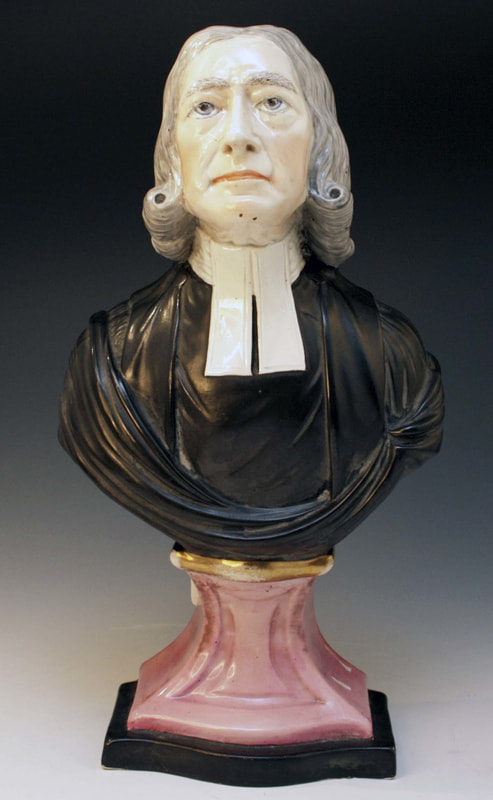In 1781, Enoch Wood, just 22 years old, modeled a bust of the Rev. John Wesley, then 78. Wesley sat for Wood five times, and he was well pleased with the likeness the young modeler rendered. From the start, Enoch Wood's model was widely acclaimed as the most realistic resemblance of Wesley ever produced. Wood placed a plaque behind each pottery version of the bust. The plaque on the example below reads "ThE REVD. JOHN WESLEY M.A. AGED 81."
Wesley died in 1791, and sometime in the next few years Enoch Wood took another look at his bust. He was rightly pleased with the likeness, but two things bothered him:
- The gown looked flat because it had been modeled from the rather rumpled everyday gown that Wesley wore on his travels, and the gown's lack of artistry did not reflect the wearer's status.
- When Wesley sat for the bust, he had suggested that Enoch Wood place a plaque on the reverse showing a very young John Wesley being saved from his father's burning house, along with the text "Is not this a brand plucked from the fire?"
As you see the result is larger (approximately 12.5" rather than 11") and suitably impressive--but to my eye it lacks the humility and humanity that the original model oozed.
One bothersome thing: Wesley was born in June 1703 and died in March 1791, so by my reckoning he was 87, not 88, at the time of his death.
Enoch Wood continued producing this model for many more decades. And as the years marched on and the figure potting industry expanded, other potters emulated the Wood bust because it had set the "look." To my eye, the standard seemed to go down hill, and you really, really have to be a Wesley enthusiast to find much merit in some of the later busts.
This is the "Sherratt" pot bank's Wesley bust---nice enough but hardly "Sherratt's" finest piece of work.





























